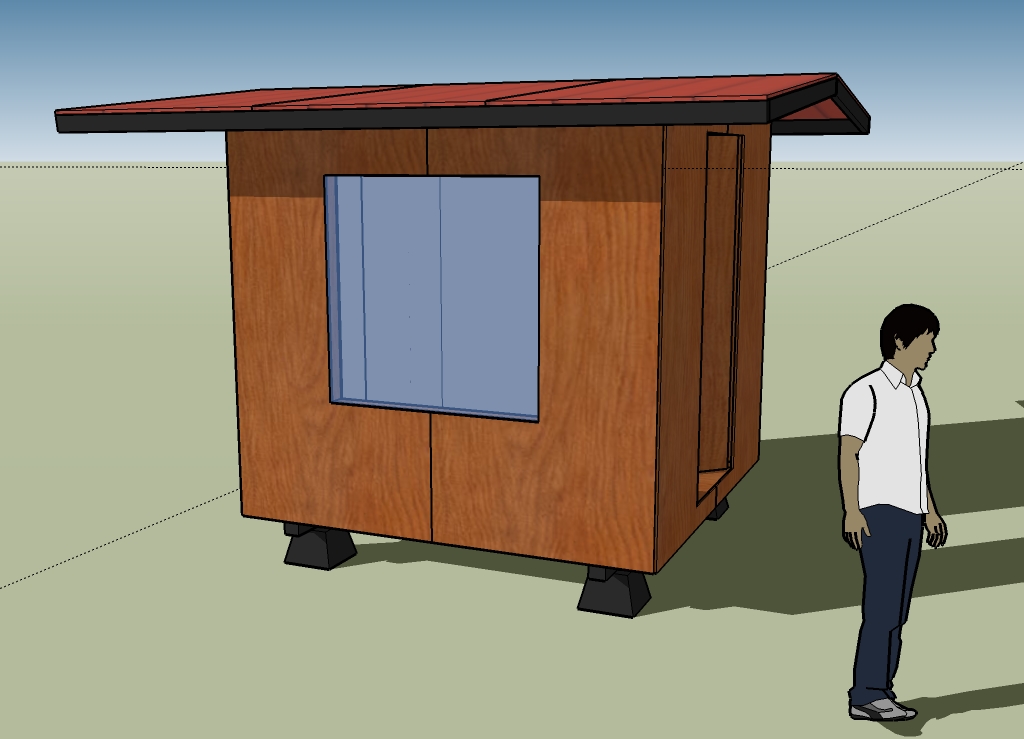After my first post on Arial Homes I was happy to get an email from Tom Pirelli, the Executive Director of The Arial Foundation. He filled me in on some of the details and future plans for making Arial Homes available in America. He also passed on a lot of great photos that show their current progress and construction process. Here is 30 second video that quickly tells the story of these prefab steel and foam tiny houses.
Their idea was to develop a housing system that could be manufactured in the community where the homes would be built. The homes needed to be sturdy, inexpensive, well insulated, and provide water, electricity, and septic solutions in regions suffering from extreme poverty. Clearly this was no simple undertaking, but it’s amazing how quickly Tom and his team were able to solve many of the challenges.
The house and it’s steel & foam roof and wall panels are just part of the story. Recently they tested a solar still in Ensenada, Mexico. It’s basically a flat box with a glass top that evaporates and then condenses foul water into drinkable water. This little unit can produce a gallon of drinkable water a day. Tom’s team tested it the old fashion way by drinking the water. No one got sick.
Water is stored in a cistern next to the home and is often trucked in by the Mexican government. The water is not potable and needs to be filtered, boiled or run through the still before use.
Dealing with septic waste has been a challenge. Most of the people they are building homes for have never had homes with running water or toilets. Shallow pit out houses are the common solution for toilets. After some experimentation they’ve landed on using a concrete lined septic tank. While this is not ideal or as efficient as a septic system with a leach field it is proving to be a far better way for solving this problem than the out houses.
I did suggest Joseph Jenkin’s sawdust toilet. If anyone else has any good ideas for alternative and effective septic solutions please post it as a comment at the end of this article and I bet Tom will spot it. Here is the septic tank.
They are also experimenting with different ways of heating water. Pictured here is some black tubing on the roof next to the photovoltaic solar panel array that provides the electricity.
Since plumbing is one of the most difficult challenges for novice home builders Tom’s team has devised a pre-built plumbing solution in a box. All the main connections happen right inside the plastic tub making it very quick to connect the fixtures to the water source.
Here is the box installed under the counter.
Here is a diagram showing how the whole water system works.
Here is a photo of the concrete slab with the indentation for the shower.
Once completed the homes are about 380 square feet with a bedroom, bathroom, and main living room with a kitchen at one end. Here are a few interior photos.
That last one is Tom drinking tea… I suspect made from the solar still water.
Tom told me in the email conversation we had today that he has tried to get approval to build an Arial Home in America but has consistently runs into restrictive building codes. He’s hoping to make more headway there and be able to make this solution more widely available. Visit The Arial Foundation for more information. Photo credit goes to The Arial Foundation.



I would suggest a book to both you and the people who are doing this project–it’s called Gaviotas, but I can’t think of the author right now. It’s about a village that developed out in the llanos of Colombia, a very inhospitable place. They brought in students and engineers and made all kinds of ingenious solutions for problems like clean water and solar power/heating with scrap materials and things that were readily available to them. I’m pretty sure it’s where the pumps powered by playground equipment were first developed. It’s a fascinating read.
Thanks Rebecca! I’ll definitely check it out.